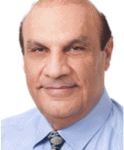Sleep is an essential biological phenomenon, and sleep deprivation causes various physiologic and behavioral changes in the body. It has been shown that total sleep deprivation (Shuch-Hofer et al., 2013) or sleep deprivation of a specific stage of sleep (Roehrs et a., 2006; Azevedo et al., 2011) cause hyperalgesia (exaggerated sensitivity to pain). In addition, people who sleep less than 6 hours or more than 9 hours seem to have increased frequency of self-reported pain (Edwards et al., 2008). The sleep-wake cycle and the pain modulation system share regulating neurobiological systems (Foo and Mason, 2003), which may help to explain the relationship between sleep and pain.
The National Sleep Foundation reports that the majority of patients who suffer from chronic pain also suffer from sleep disturbances. Of course, chronic pain may lead to sleep fragmentation and a lack of restorative sleep, and by that contribute to the exacerbation of pain. The pain exacerbation may lead to more disturbed sleep and a vicious cycle of exacerbated pain and disturbed sleep may ensue with likely impact upon the person’s quality of life. Moreover, changes in sleep pattern, such as poor sleep quality, can be associated with the development of painful conditions. A recent review conducted by Finan et al. (2013) points to the fact that sleep impairments are a stronger and more reliable predictor of pain than pain is of sleep impairments. This information directs us to consider what interventions might address sleep impairments in people with chronic pain.
There is subjective and objective evidence (through questionnaires about sleep, and polysomnography and actigraphy, respectively) that physical exercise is able to improve sleep patterns in healthy individuals (Keedlow et al., 2015). Particularly in insomnia patients, regular exercise leads to benefits over time, being comparable to pharmacotherapy and behavior therapy (see review Keedlow et al., 2015). Pilates, for example, improves muscle flexibility and strength and also improves life quality and has been shown to be able to improve sleep quality (Caldwell et al., 2009 and 2010; Leopoldino et al, 2013).
In an empirical study, our group investigated sleep fragmentation and difficulty in maintaining sleep (staying asleep) in two middle aged women. After 6 months of exercise twice a week for one and a half hour, the women treated had sleep improvements both in objective and subjective measures, even though it is a case report, this study suggests that physical therapy can be used reducing insomnia (Llanas et al., 2008). In addition, we found that yoga decreased subjective reports of insomnia in postmenopausal women, in a randomized study, composed by 3 groups: control (n=15), passive stretching (n=14) and yoga (n=15), one hour two times a week, for four months (Afonso et al., 2012).
A new avenue of research into the relationship between sleep and exercise is also being developed, with increased physical activity being prescribed not only as a treatment to improve sleep quality and efficiency, but also bringing other beneficial “contralateral effects”, such as improving heart rate variability, mood, fatigue, increasing energy consumption, changing body composition and improving healthy habits for life. Healthy sleep should be encouraged between exercise sessions to promote “off line” learning (memory consolidation when not doing the exercise, that may happen during sleep) of the skills practiced in physical therapy or of the exercise in rehabilitation (Walker et al., 2002; Attarian et al., 2014).
Furthermore, the National Sleep Foundation has just released a report, yet unpublished, about the relationship between pain and sleep titles “How pain affects sleep”, The report is available on their website (click on the previous link). In this study, they argue that prioritizing sleep and better sleeping habits is necessary for a better heath quality. For example, those Americans with chronic pain have an average sleep-debt of 42 minutes/week when compared to non-pain suffers.
One simple way to promote sleep and improve its quality and quantity is sleep hygiene, a behavioral intervention, which is extremely important for everyone, from children to the elderly. In our 24/7 society, applying it in our daily routine takes some time and patience, as behaviors are difficult (but not impossible!) to modify, so we must have persistence and incorporate one rule at a time. The main recommendations for good sleep hygiene are: establishing a regular routine for going to bed and getting up; creating a pleasant sleeping environment with a comfortable bed, a quiet environment, and a pleasant temperature; using the room only to sleep (no eating, reading or watching TV, tablets, or any activity that can interrupt the sleeping process – the idea here is to associate your bed with sleep); do not stay in bed if you can’t sleep yet, you should get out of bed, walk around the house or read a book, for example, and then try to sleep again; avoiding daytime naps (although a very quick nap after lunch can be beneficial in some cases); avoiding the use of sleep medications (except those prescribed for medical reasons); having only light meals in the evening but not going to bed hungry or thirsty; limiting fluid intake before going to bed to avoid going to the bathroom during the night; avoiding caffeine and alcohol or other beverages and stimulating foods prior to bedtime (Robillard et al., 2015); practicing relaxing activities before going to bed, such as a having a warm bath or a massage; and taking regular physical exercise (Stepanski and Wyatt, 2003).
About the authors
 Marcele Siegler, physiotherapist, specialist in acupuncture and Pilates. She is a master’s student in Medicine and Biology in the Sleep Division of the Department of Psychobiology, Universidade Federal de São Paulo (UNIFESP), São Paulo. She studies Pilates, insomnia and menopause.
Marcele Siegler, physiotherapist, specialist in acupuncture and Pilates. She is a master’s student in Medicine and Biology in the Sleep Division of the Department of Psychobiology, Universidade Federal de São Paulo (UNIFESP), São Paulo. She studies Pilates, insomnia and menopause.
 Cristina Frange, physiotherapist, specialist in neurology, aquatic physiotherapy, myofascial release and global postural reeducation. She is a PhD student in Medicine and Biology in the Sleep Division of the Department of Psychobiology, UNIFESP, São Paulo. She studies the relationship between sleep and chronic pain and is interested in the treatment of sleep disturbances with physiotherapy.
Cristina Frange, physiotherapist, specialist in neurology, aquatic physiotherapy, myofascial release and global postural reeducation. She is a PhD student in Medicine and Biology in the Sleep Division of the Department of Psychobiology, UNIFESP, São Paulo. She studies the relationship between sleep and chronic pain and is interested in the treatment of sleep disturbances with physiotherapy.
 Monica Levy Andersen, biomedical scientist, PhD. Associate Professor of Medicine and Sleep Biology, Department of Psychobiology of UNIFESP. Researcher at the Association of Research Incentive Fund (AFIP) and the National Council for Scientific and Technological Development (CNPq). Visiting Professor at the Yerkes National Primate Research Center-Emory University and at Harvard Medical School. Coordinator of the Sleep Laboratory in Rats and Mice Department of Psychobiology and also coordinator of the Ethics Committee on Animal Use at UNIFESP. She has published over 330 articles in international scientific journals, and is the author of four books and more than 20 chapters. She has experience in Psychobiology, with emphasis on the following topics: sleep deprivation, hormonal regulation, sexual behavior, neurotransmission, neurobiology/neuroimaging, dependency drug abuse, nociception mechanisms and standard registration sleep in rodents.
Monica Levy Andersen, biomedical scientist, PhD. Associate Professor of Medicine and Sleep Biology, Department of Psychobiology of UNIFESP. Researcher at the Association of Research Incentive Fund (AFIP) and the National Council for Scientific and Technological Development (CNPq). Visiting Professor at the Yerkes National Primate Research Center-Emory University and at Harvard Medical School. Coordinator of the Sleep Laboratory in Rats and Mice Department of Psychobiology and also coordinator of the Ethics Committee on Animal Use at UNIFESP. She has published over 330 articles in international scientific journals, and is the author of four books and more than 20 chapters. She has experience in Psychobiology, with emphasis on the following topics: sleep deprivation, hormonal regulation, sexual behavior, neurotransmission, neurobiology/neuroimaging, dependency drug abuse, nociception mechanisms and standard registration sleep in rodents.
 Sergio Tufik, MD, PhD, is a researcher at UNIFESP and chairman of the Sleep Studies Center. Researcher at the Association of Research Incentive Fund (AFIP) and the National Council for Scientific and Technological Development (CNPq). He is a member of the Brazilian Society of Sleep, the Brazilian Society of Neuroscience and Behavior, the Latin American Federation of Sleep Societies, the American Association of Sleep Medicine, the Sleep Research Society, and the World Federation of Sleep Research and Sleep Medicine.
Sergio Tufik, MD, PhD, is a researcher at UNIFESP and chairman of the Sleep Studies Center. Researcher at the Association of Research Incentive Fund (AFIP) and the National Council for Scientific and Technological Development (CNPq). He is a member of the Brazilian Society of Sleep, the Brazilian Society of Neuroscience and Behavior, the Latin American Federation of Sleep Societies, the American Association of Sleep Medicine, the Sleep Research Society, and the World Federation of Sleep Research and Sleep Medicine.
 Helena Hachul, MD, PhD, is a researcher and tutor in endocrine gynecology and is head of the Climacteric Sleep Disturbances Clinic in the Sleep Division at the Department of Psychobiology, UNIFESP. She has experience in the area of medicine, with an emphasis on gynecology and sleep in women. She studies pharmacological interventions, such as hormonal therapy, and complementary and alternative therapies (massage, acupuncture, yoga, physiotherapy) to treat insomnia.
Helena Hachul, MD, PhD, is a researcher and tutor in endocrine gynecology and is head of the Climacteric Sleep Disturbances Clinic in the Sleep Division at the Department of Psychobiology, UNIFESP. She has experience in the area of medicine, with an emphasis on gynecology and sleep in women. She studies pharmacological interventions, such as hormonal therapy, and complementary and alternative therapies (massage, acupuncture, yoga, physiotherapy) to treat insomnia.
References
Afonso RF, Hachul H, Kozasa EH, Oliveira Dde S, Goto V, Rodrigues D, Tufik S, & Leite JR (2012). Yoga decreases insomnia in postmenopausal women: a randomized clinical trial. Menopause, 19 (2), 186-93 PMID: 22048261
Azevedo, E., Manzano, G., Silva, A., Martins, R., Andersen, M., & Tufik, S (2011). The effects of total and REM sleep deprivation on laser-evoked potential threshold and pain perception Pain, 152 (9), 2052-2058 DOI: 10.1016/j.pain.2011.04.032
Attarian H, Hachul H, Guttuso T, & Phillips B (2014). Treatment of chronic insomnia disorder in menopause: evaluation of literature. Menopause PMID: 25349958
Caldwel k, Harrinson M, Adms M, Quin RH, Greeson J (2010). Developing Mindfulness in College Students through Movement Based Courses: effecys on Self-Regulatoty Self-Efficacy, Mood, Strees, and Sleep Quality. J Am Coll Health, 58: 433-442.
Caldwel k, Harrinson M, Adms M, Triplett NT (2009). Effect of Pilates and taiji quan training on self-efficacy. Sleep quality, mood, and physical performance of college students. Bodywork and Movement Therapies, 13:155-163.
Edwards RR, Almeida DM, Klick B, Haythornthwaite JA, Smith MT (2008). Duration of sleep contributes to next-day pain reporting the general population. Pain, 137:202-07.
Finan PH, Goodin BR, & Smith MT (2013). The association of sleep and pain: an update and a path forward. J Pain, 14 (12), 1539-52 PMID: 24290442
Foo H, Mason P. (2003) Brainstem modulation of pain during sleep and waking. Sleep Med Rev., 7:145-54.
Kredlow MA, Capozzoli MC, Hearon BA, Calkins AW, & Otto MW (2015). The effects of physical activity on sleep: a meta-analytic review. J Behav Med, 38 (3), 427-49 PMID: 25596964
Llanas AC, Hachul H, Bittencourt LRA, Tufik S (2008). Physical therapy reduces insomnia symptoms in postmenopausal women. Maturitas, 61:281-84.
Leopoldino AA, Avelar NC, Passos GB Jr, Santana NÁ Jr, Teixeira VP Jr, de Lima VP, & de Melo Vitorino DF (2013). Effect of Pilates on sleep quality and quality of life of sedentary population. J Bodywork Mov Ther, 17 (1), 5-10 PMID: 23294677
http://sleepfoundation.org/sleep-polls-data/2015-sleep-and-pain
Roehrs T, Hyde M, Blaisdell B, Greenwald M, Roth T (2006). Sleep loss and REM sleep loss are hyperalgesic. Sleep, 29(2):145-51.
Robillard R, Bouchard M, Cartier A, Nicolau L, & Carrier J (2015). Sleep is more sensitive to high doses of caffeine in the middle years of life. J Psychoparmacol PMID: 25759402
Stepanski EJ, Wyatt JK. (2003). Use of sleep hygiene in the treatment of insomnia. Sleep Med Rev., 7:215-25.
Schuh-Hofer S, Wodarski R, Pfau DB, Caspani O, Magerl W, Kennedy JD, & Treede RD (2013). One night of total sleep deprivation promotes a state of generalized hyperalgesia: a surrogate pain model to study the relationship of insomnia and pain. Pain, 154 (9), 1613-21 PMID: 23707287
Walker MP, Brakefield T, Morgan A, Hobson JA, Stickgold R (2002). Practice with sleep makes perfect: sleep-dependent motor skill learning. Neuron, 35:205-11.



